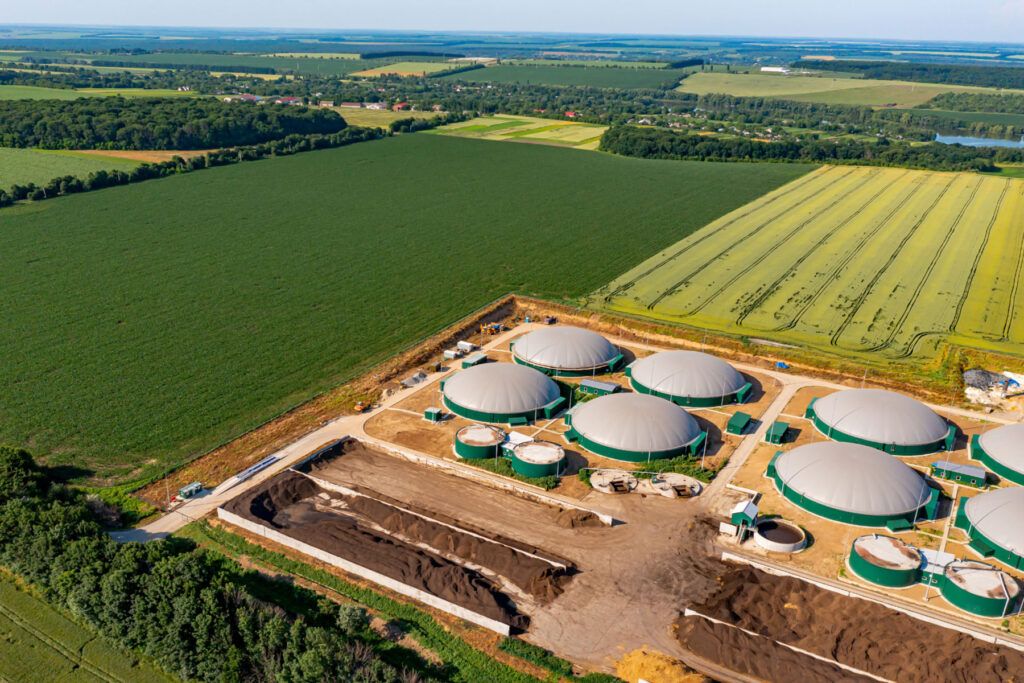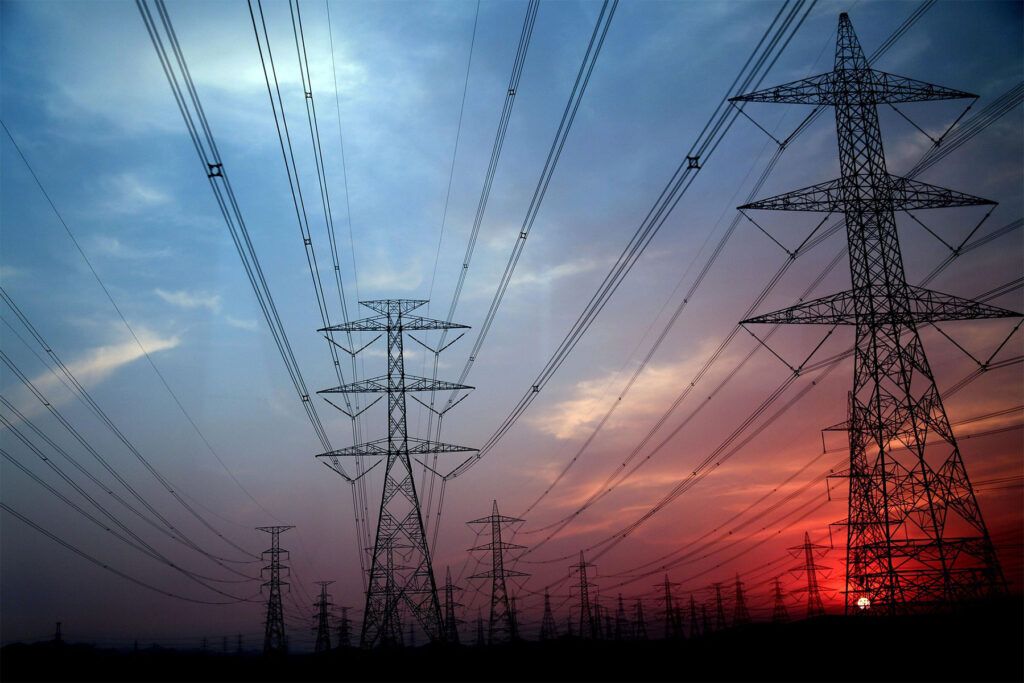The summer of 2024 is set to end as the warmest summer on record since the collection of weather data began 175 years ago. This record that is no longer something out of the ordinary; for four decades the temperature of the planet has been on an unstoppable upward trend, having increased by an average of 1.45°C.

Land and Ocean Temperature Departure from Average August 2024 – NOAA GlobalTemp v6.0.0-20240908
Although 2023 stood out as the hottest, it is likely that at the end of this year the temperatures experienced throughout the planet will exceed those recorded last year. The most alarming thing is that we are not facing a scenario of weather anomalies occurring in specific or seasonal episodes, but which are increasingly constant and recurrent changes. This is due to the energy trapped in the atmosphere, which in turn is due to the high levels of greenhouse gasesWhile the concentration of carbon dioxide (CO2) in the atmosphere has been steadily and rapidly increasing in recent decades, in May 2025, CO2 surpassed 43...
Read more (GHG) present.
“2023 has clearly shown us that climate change is already here. Unprecedented temperatures scorch the earth and warm the oceans, and episodes of extreme weather events wreak havoc across the globe. Although we know that this is only the beginning, the global response is clearly insufficient.” Antonio Gutérres, Secretary-General of the UN.
Forest fires, cyclones, heat waves, torrential rains, rising sea levels and long droughts are increasingly frequent phenomena that develop with unusual speed and fury across the planet. This threat causes greatest havoc among humans, as well as on ecosystems and species in their habitats.
Air Quality Innovation in Just 1 Click
Stay informed about the air you breathe!
Subscribe to our newsletter to receive the latest updates on environmental monitoring technology, air quality studies, and more.
In order to confront this global environmental threat, it is essential to monitor the state of the climate. By accurately monitoring the main greenhouse gases (carbon dioxide, methane and nitrous oxide), we still have time to mitigate climate change.
What is the greenhouse effect?
The greenhouse effect is a natural phenomenon that enables the Earth to retain heat from visible and ultraviolet light, including solar radiation. Part of this radiation is absorbed by the Earth’s surface, which causes it to be heated to a level suitable for the development of life. Without such solar energy, the average temperature of the planet would not rise from -18°C.
However, part of this radiation is returned to the atmosphere in the form of infra-red radiation in order to balance the heat. Then, some polluting gases caused by human activities and remaining in the atmosphere absorb part of this infra-red radiation, which is then returned to the Earth’s surface, causing considerable warming. Heat is trapped by the action of greenhouse gases, drastically altering the temperature appropriate for the development of life in the biosphere and causing global warming.
Main causes of increased greenhouse gas concentration
The main sources of air pollutantsAir pollution caused by atmospheric contaminants is one of the most critical and complex environmental problems we face today, both because of its global r...
Read more contributing to the greenhouse effect are human activities that release a number of GHGs into the atmosphere.
Depending on the sector from which they originate, the causes of the presence of GHG can be classified as:
Burning of fossil fuels
Industry and power generation
Industries that use coal, oil and natural gas as fuel, together with power plants, are the largest sources of carbon dioxide generation, which is the main gas that contributes to the greenhouse effect.
Transportation
Fossil-fuel modes of transport, such as cars, trucks, planes and ships generate large amounts of CO₂.
Agriculture and livestock
Agricultural and livestock activities generate two of the main GHGs: methane and nitrous oxide. Methane is also generated in the anaerobic decomposition of agricultural and organic waste in landfills. Meanwhile, nitrous oxide comes primarily from synthetic nitrogen fertilisers used in intensive agriculture, as well as in certain industrial processes.
Deforestation
Natural vegetation masses such as forests have a remarkable ability to absorb CO₂. As the deforestation of the forest surface continues, the atmosphere will retain large proportions of such harmful GHGs. Trees and vegetation in general are known as carbon sinks because they are the plant structures, along with the oceans, that capture the most CO₂ stored in the atmosphere.
Waste and landfills
The decomposition of organic waste in landfills produces methane due to the anaerobic decomposition of organic matter. Similarly, the incineration of petroleum waste releases multiple pollutants into the air, including CO₂.
Industrial processes
Industrial activities such as the production of cement, steel, chemicals and other materials release large amounts of CO₂ and other gases, such as nitrous oxide and fluorocarbons.
Use of industrial chemicals
Fluorinated gases, chlorofluorocarbons (CFCs), hydrofluorocarbons (HFCs) and perfluorocarbons (PFCs) are used in chemicals such as refrigerants, aerosols and foams. They are very dangerous if they are released into the air because they are very powerful GHGs. However, their concentration in the atmosphere is lower compared to carbon dioxide and methane.

Scopes of greenhouse effect emissions
The importance of measuring greenhouse gases
The monitoring of air pollutants, mainly from anthropogenic activities, should be based on accurate and precise data to correctly assess the impact of GHGs on the state of the global climate. This has been confirmed by more than 100 global experts from 48 countries, who have been gathered by the IPCC (Intergovernmental Panel on Climate Change) in Ispra (Italy) at the Joint Research Centre of the European Commission.
According to researcher Giacomo Grassi, the biggest challenge we face is “striking differences in estimates of anthropogenic CO2 flows versus national greenhouse gas inventories used to assess compliance with national climate targets”. These must follow the guidelines of international frameworks such as the Paris Agreement, global carbon budgets (they seek a balance between the amount of CO₂ produced by industry, households and other sectors of the economy and activities that eliminate it from the atmosphere) and the assessment reports from the Intergovernmental Panel on Climate Change.
“While there are tools and models that provide unprecedented monitoring opportunities, there are still significant differences in estimates of CO2 flows from anthropogenic land use.” Grassi, G., et.al, 2023.
Measuring the flows and concentrations of polluting gases such as carbon dioxide, methane and nitrous oxide, which are the three main emissions contributing to climate change, must be based on robust and consistent data. By collecting reliable data and then analysing it, the global state of the climate can be accurately evaluated.
To be effective in global climate action, national and international policies need to be based on the data underpinning scientific research. Once analysed, this data provides a solid and transparent resource that supports not only technological innovation and product certification, but also the development of regulatory standards and practices in the face of global warming.

Looking to control the impact of your processes on air quality?
Download the technical report [PDF] on the air quality monitoring network deployed at the Cemex plant.
More climate science
In the field of scientific research, the collection of GHG data is crucial to understanding and mitigating climate change. This data enables scientists to model and predict changes in climate, assess the impact of human activities and develop strategies to reduce emissions.
For example, agriculture is a significant source of polluting gases such as methane and nitrous oxide. Agencies such as the Food and Agriculture Organization of the United Nations (FAO) are developing guidelines to accurately estimate emissions in this sector. It also defines practices to reduce the effect of agricultural activities on the presence of greenhouse gases in the atmosphere.
“Revolutionary scientific and technological advances, such as high-resolution climate modelling, artificial intelligence and immediate prediction, can drive the transformation that will achieve SDGs. In addition, ensuring that early warnings protect the entire population by 2027 will not only save lives and livelihoods, but will also help safeguard sustainable development.” Petteri Taalas, Secretary General of the World Meteorological Organization (WMO).
In addition, open data is essential to properly measure the carbon footprintIn a world increasingly affected by climate change, understanding how our everyday actions contribute to its worsening has become essential. The carbon foo...
Read more and, building on that, to promote transparency and collective action. In Europe, the use of open data has already contributed to significant energy and cost savings.
Science therefore has a key role to play in making progress in the face of the extreme urgency required for climate action. As such, the World Meteorological Organization (WMO) has launched a greenhouse gas monitoring programme, Global Greenhouse Gas Watch (G3W), which invites global experts to collaborate in an integrated and common effort to monitor GHGs present both in space and in the atmosphere in contact with the Earth’s surface.
The analysis of the data obtained during the measurement and control of the levels of the main GHGs is crucial for modelling. This enables climate action strategies to be developed in accordance with the Paris Agreement and the mitigation measures adopted by 197 countries in the United Nations Framework Convention on Climate Change (UNFCCC) in order to stabilise greenhouse gas concentrations in the atmosphere.
The urgent need to reduce global GHG emissions and achieve net zero emissions requires a joint effort at the global level. Data collection and analysis is therefore an essential pillar in the fight against global warming. Monitoring and verifying data are what enable a country to evaluate the effectiveness of its climate actions.
At the mid-point of Agenda 2030, the science is clear: the planet is far from meeting its climate goals. United in Science 2023 Inform. WMO.
Measure and model the climate of the future
Accurate monitoring of the main greenhouse gases, such as carbon dioxide (CO2), methane (CH4) and nitrous oxide (N2O), is crucial to moving toward a safe climate future. Improving accuracy and reliability in monitoring carbon dioxide, methane and nitrous oxide will enable data verification and modelling to become a robust and effective method for informing climate policies at national, regional and local levels, therefore assisting the global achievement of results in the face of climate change.
While there is growing concern about the impact of greenhouse gases on the atmosphere, there are also more international agreements to make an accurate inventory of the sources from which they come and the levels of their emissions.
For example, there are several international datasets reporting on fossil fuel production and processing for the most important of greenhouse gases, CO2, and they form the basis of emission inventories. Combined with data on the carbon content of various fuels and industrial products, these datasets enable reasonable estimates of national annual emissions of CO2.
“While carbon dioxide emissions are declining in some regions, including Europe and the United States, they continue to increase overall… Global action to reduce fossil fuel consumption is not happening fast enough to prevent the dangerous impacts of climate change.” Global Carbon Budget 2023 Report.
However, while equally important, it is more difficult to estimate greenhouse gas emissions on a smaller national and temporary scale. These estimates are often derived from indirect data such as population density, satellite observations of night lights or road traffic counts to estimate urban emissions or specific geographical areas. That is why clear limits should be established for inventories and the uncertainty of inventoried emissions should be understood.
Similarly, accurate and reliable data supports scientific research that seeks to better understand complex climate processes and their effects on ecosystems. Detailed information on emission sources and their time variability is also essential for creating more accurate climate models, which are key tools for long-term prediction and planning.
In short, data collection is not only important for current climate action, but also for preparing society and human activities to adapt to future changes and, as a result, minimise risks to people and the environment associated with climate change.
How to measure greenhouse gases
GHG data collection is carried out through a variety of methods that include both the collection of existing data and the generation of new data.
Atmospheric monitoring stations
Atmospheric monitoring stations are critical in the measurement of GHGs because they provide continuous, real-time data on the concentration of these gases in the atmosphere. These stations are strategically located in urban, rural, and remote areas to capture a complete picture of global and regional emissions. A typical monitoring station is equipped with a variety of specialised analysers to detect the main gases responsible for the greenhouse effect. Common instruments include non-dispersive infra-red absorption spectrometers (NDIR), tunable diode laser absorption spectroscopy (TDLAS) or gas chromatography.
Satellite images
The integration of data from multiple sources and technologies also enables the creation of more accurate climate models, which are key tools for long-term prediction and planning.
For this reason, indirect methods such as the analysis of satellite images are used to indicate gas levels in large and remote areas.

A methane plume at least 3 miles (4.8 kilometers) long billows into the atmosphere south of Tehran, Iran. The plume, detected by NASA’s Earth Surface Mineral Dust Source Investigation mission, comes from a major landfill, where methane is a byproduct of decomposition. Credits: NASA/JPL-Caltech
Satellites can carry on-board instruments, such as spectrometers, to measure sunlight reflected and absorbed by the Earth, providing data on the concentration of gases such as CO2, CH4 and N2O.
LIDAR (Light Detection and Range) technology has also been integrated into satellite platforms. These systems emit laser pulses into the atmosphere and measure reflected light to calculate gas concentrations. LIDAR-equipped satellites can conduct large-scale surveys of the atmosphere and Earth surface, helping to gain a broader view of global trends in air qualityAir quality refers to the state of the air we breathe and its composition in terms of pollutants present in the atmosphere. It is considered good when poll...
Read more.
Greenhouse gas inventories
National greenhouse gas inventories are also a crucial source of data over a given period of time (usually one year). This is data obtained according to methodology standardised by the IPCC, which is fundamental. It is compiled from energy statistics, industrial data and other sources that quantify emissions from human activities.
These inventories are used to verify that each country complies with international treaties for climate action, such as the Paris Agreement. Similarly, inventories enable each country to assess the effectiveness of its climate policies and adapt them to meet the goals set globally.
These methods are complemented by computational models that estimate emissions based on emission factors and activity data. Adapting data for use in inventories is a meticulous process that ensures consistency and comparability over time and across different regions.
Sensor-based monitoring stations
Sensor-based monitoring stations play a key role in the early detection of leaks and localised emissions, especially in industrial sectors. While these stations are used for air quality monitoringControlling air quality is an essential task in order to enjoy optimal environmental conditions for healthy human development and to keep the environment i...
Read more, they are not useful for directly measuring GHG concentrations in the atmosphere on a large scale. They are essential for detection because they enable industries to identify leaks in real time and detect inefficient processes that could be generating additional emissions.
For example, Kunak’s low-cost, high-precision sensors, installed on the perimeters of industrial infrastructures, enable methane leaks in landfills or gas processing facilities to be identified.
This type of technology helps companies act quickly, minimising fugitive emissions and optimising their processes. These sensors contribute indirectly to GHG mitigation by reducing uncontrolled leakage and optimising industrial processes. In short, they enable more efficient control of emissions in real time, which is crucial to meeting global climate objectives.
Other methods
Another important technology is the Eddy Covariance Technique, a scientific method that measures the fluxes of gases between the Earth’s surface (soil, water and vegetation) and the atmosphere to determine the exchange of gases between them. This technique is especially useful for studying sinks and sources of greenhouse gases through fluctuation (turbulence or eddies) that circulate vertically between the Earth and the atmosphere transporting gases, water vapour and energy.
In addition, isotopic techniques with nitrogen 15 and carbon 13 are used to track the movement and origin of gas emissions, which is essential for developing sustainable and climate-smart agricultural practices.
The combination of these technologies provides a complete and accurate picture of greenhouse gas levels, which is crucial for informed climate change decision-making.
Climate action
There is no time to waste for the main responsible parties, the countries with the highest incomes (members of the G20 are responsible for almost 70% of global greenhouse gas emissions), to take action.
More ambitious measures are urgent and necessary to achieve climate targets that require a 28% reduction in these gases by 2030. Achieving this goal is critical to advancing climate action to ensure a healthy climate for life on the planet.
References
- Poulter, B., Canadell, J., Hayes, D. and Thompson, R. Balancing Greenhouse Gas Budgets. Elsevier. Eds. May 2022.
- Janssens-Maenhout, G., al,2020. Towards an Operational Anthropogenic CO2 Emissions Monitoring and Verification Support Capacity. Bull. Amer. Meteor. Soc., 101, E1439–E1451, https://doi.org/10.1175/BAMS-D-19-0017.1
- Grassi, G., al, 2023. Harmonising the land-use flux estimates of global models and national inventories for 2000—2020. Earth System Science Data, 15, 3 (1093—1114). https://essd.copernicus.org/articles/15/1093/2023/
- World Meteorological Organization, al. United in Science 2023 Inform. https://library.wmo.int/records/item/68235-united-in-science-2023
- Friedlingstein, P. al.Global Carbon Budget 2023. Earth System Science Data. 15, 12 (5301—5369). https://essd.copernicus.org/articles/15/5301/2023










